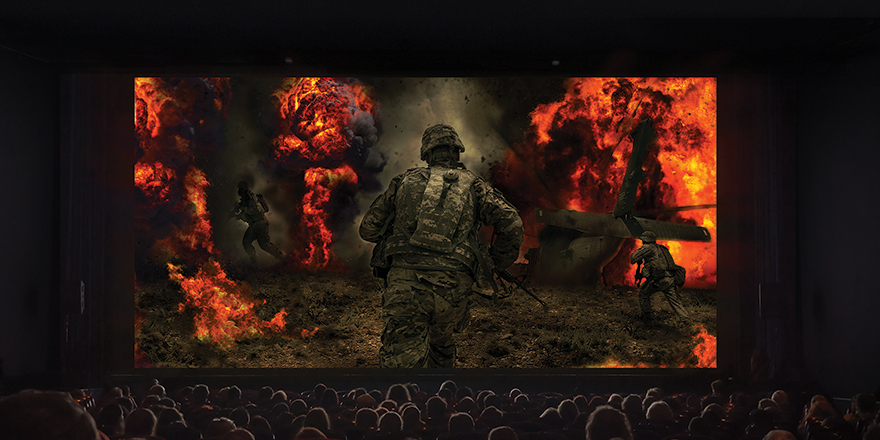By Dan Smith
Head of Business Development
LG Business Solutions USA
Rapidly progressing technology in LED signage video walls is helping to eliminate barriers to entry while enhancing the inherent strengths of the technology. Previously we covered how historic obstacles like cost, ordering complexity, visual performance and user experience are being changed through design innovations. Today we’ll conclude with scalability, applications, and durability.
SCALABILITY AND APPLICATIONS – Thanks to its modular form factor and variable mounts and power supplies, LED Signage is rapidly evolving into an “any place, any time” display technology, fitting in stadiums, city parks, corporate lobbies, conference rooms, hotels, museums, and more.
LED Signage walls have always been excellent solutions for making large scale images without lines or bezels, and that fact has introduced the promise of widespread LED Signage displays on any surface – and that really means any surface. What’s more, indoor and weatherproof outdoor models can now achieve brightness of 5,000-plus nits, so no location is off limits, even in direct sunlight.
In addition to standard LED Signage walls, there are now specialty and high-visual-performance MicroLED Signage options for commercial cinemas, cruise ships and aggressive outdoor environments. No matter the size, LED Signage displays also come with the benefit of weighing less and using less energy than comparable LCD walls, lowering the on-site infrastructure and power requirements. Installing LED Signage can be easier because individual LED Signage panels are designed to be pieced together into large seamless LED Signage displays, and some of the latest products have even introduced a tongue and groove rack-and-stack assembly method that eliminates the need to connect any cables between modules.
The robust and reliable nature of LED Signage displays also make them ideal for more unique applications, such as a house of worship that uses the displays for regular services and also wants to relocate them for special events. For instance, churches could use two ceiling-flown LED Signage displays flanking the stage, and then be able to lower and combine them into a single display to form the backdrop of a play. This eliminates the need to rent displays for periodic events and can quickly pay for itself in rental savings.
The advent of notebook-sized LED Signage panels that seamlessly snap together has also introduced the option for unique and creative display solutions, such as a display in the shape of a star or a logo. Early adopters have already used this technology to install single displays that cover an entire lobby wall from floor to ceiling, with imagery flowing around doorways and windows, and even on curved walls thanks to flexible technologies. For content creators and marketing professionals, the possibilities are endless as they are no longer bound to symmetrical shapes and 16:9 displays.
DURABILITY – With quiet 24/7 operation, much lower energy usage and heat generation, long product life of up to 100,000 hours (11.4 years at 100 percent white) and up to 200,000 hours (22.8 years) under real-world usage, LED Signage is the undisputed durability king of the display world. Those are only the core benefits, too, with more specialized enhancements including the ability to be in various outdoor scenarios.
With the rate of technological innovation catching up to the pace of client needs, all signs point to a future where LED Signage displays, including Mini-LED and MicroLED solutions, will dominate the global digital display marketplace.





